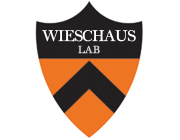A nuclear function for armadillo/beta-catenin.
Publication Year
2004
Type
Journal Article
Abstract
The Wnt signaling pathway provides key information during development of vertebrates and invertebrates, and mutations in this pathway lead to various forms of cancer. Wnt binding to its receptor causes the stabilization and nuclear localization of beta-catenin. Nuclear beta-catenin then functions to activate transcription in conjunction with the transcription factor TCF. A recent report has challenged this basic precept of the Wnt signaling field, arguing that the nuclear localization of beta-catenin may be unrelated to its function and that beta-catenin functions at the plasma membrane to activate this signaling pathway. Here we present evidence that the pathway in fact does depend on the nuclear localization of beta-catenin. We reexamine the functionality of various truncations of beta-catenin and find that only the most severe truncations are true signaling-null mutations. Further, we define a signaling-null condition and use it to show that membrane-tethered beta-catenin is insufficient to activate transcription. We also define two novel loss-of-function mutations that are not truncations, but are missense point mutations that retain protein stability. These alleles allow us to show that the membrane-bound form of activated beta-catenin does indeed depend on the endogenous protein. Further, this activity is dependent on the presence of the C-terminus-specific negative regulator Chibby. Our data clearly show that nuclear localization of beta-catenin is in fact necessary for Wnt pathway activation.
Keywords
Animals,
Protein Structure, Tertiary,
signal transduction,
Mutation,
Molecular Sequence Data,
Transcription Factors,
Blotting, Western,
Microscopy, Fluorescence,
Cell Membrane,
Carrier Proteins,
Phenotype,
Nuclear Proteins,
Cell Nucleus,
Drosophila melanogaster,
Wnt Proteins,
Alleles,
Transgenes,
Drosophila Proteins,
Crosses, Genetic,
Mutation, Missense,
Armadillo Domain Proteins,
beta Catenin
Journal
PLoS Biol
Volume
2
Issue
4
Pages
E95
Date Published
04/2004
ISSN Number
1545-7885
Alternate Journal
PLoS Biol.
PMID
15024404

